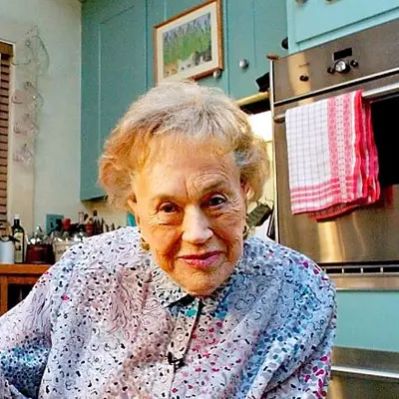What Is Hal Sutton’s Net Worth
Hal Sutton, a distinguished American professional golfer, has cultivated a net worth of approximately $8 million. This valuation reflects his achievements over a career spanning more than three decades, characterized by notable victories, endorsements, and strategic investments. Sutton’s financial portfolio is a testament to his skill on the golf course and his acumen off it.
Career Earnings and Financial Milestones
Throughout his professional golfing career, Hal Sutton accumulated over $15 million in official PGA Tour earnings. A significant portion of these earnings came before the substantial prize money increases associated with the Tiger Woods era, underscoring his consistent performance and longevity in the sport. His most financially rewarding season was in 2000, when he earned nearly $2.5 million. This sum included the $1.08 million he received for winning The Players Championship, a victory that significantly boosted his annual income and overall net worth.
Beyond tournament winnings, Sutton strategically enhanced his financial standing through endorsement deals. These partnerships with golf equipment manufacturers and other companies provided a steady stream of income, contributing to his overall financial health. While the specific financial terms of these endorsement deals are not publicly disclosed, they are a common and lucrative avenue for professional golfers to supplement their tournament winnings and build their net worth. His Hal Sutton Foundation has contributed to children’s charities in Louisiana as well.
Real Estate Investments
In April 2022, Hal Sutton and his wife, Stacy, made a notable real estate investment, purchasing a home set on 11.2 acres in Columbus, Texas, for $1.4 million. This acquisition represents a significant asset in their portfolio, reflecting a strategic decision to invest in property. The 11.2-acre estate provides a private and spacious setting, indicative of Sutton’s lifestyle and investment preferences. The exact details of the property, such as square footage, number of bedrooms, and specific amenities, are not publicly available. Such real estate holdings contribute to the overall net worth and long-term financial stability of individuals like Hal Sutton.
Professional Breakthrough and Major Glory
Hal Sutton’s career reached an early peak at the 1983 PGA Championship held at Riviera Country Club in Pacific Palisades, California. His victory over Jack Nicklaus by a single stroke not only defined a pivotal moment in his career but also significantly boosted his financial prospects. Winning the PGA Championship earned Sutton the PGA Tour Player of the Year award, increasing his marketability and leading to more lucrative endorsement deals. While the exact prize money for the 1983 PGA Championship is not specified, major championship wins historically result in substantial financial gains for the victor, further contributing to Sutton’s rising net worth during that period.
Sutton’s initial success quickly translated into enhanced earnings through subsequent tournaments and sponsorship opportunities. The prestige of winning a major championship elevates a golfer’s profile, attracting more endorsement deals and higher appearance fees. These factors combined to solidify Sutton’s financial foundation in the early to mid-1980s, contributing to the overall accumulation of his net worth. The specific details of the increased endorsements following his PGA Championship victory are not publicly available, the general trajectory for professional golfers following such a win is one of increased financial opportunities.
Career Challenges and Comeback
After his early success, Hal Sutton experienced a challenging period in the late 1980s and early 1990s, during which his performance declined. From 1986 to 1995, he did not win any PGA Tour events, which impacted his earnings and potentially his endorsement opportunities. The specific financial implications of this winless streak are not detailed in available information; however, it’s reasonable to assume a decline in tournament winnings and possibly a reduction in endorsement income. However, Sutton demonstrated resilience and made a comeback, winning the 1995 B.C. Open. This victory not only restored his confidence but also revitalized his earning potential. Returning to the winner’s circle opened new avenues for financial gains, setting the stage for further success in the latter part of his career.
Sutton’s resurgence continued with a notable win at The Players Championship in 2000, where he outplayed Tiger Woods. The $1.08 million prize for this victory significantly augmented his earnings for the year and boosted his net worth. These accomplishments in the late 1990s and early 2000s illustrate how comebacks in professional sports can lead to substantial financial rewards. The specific details of any renegotiated endorsement deals or new sponsorships resulting from his improved performance are not available, but his resurgence undoubtedly had a positive impact on his financial standing.
Ryder Cup Leadership
Hal Sutton’s participation in the Ryder Cup, both as a player and as a captain, contributed to his overall career earnings and recognition. As a player, his appearances in 1985, 1987, 1999, and 2002 added to his prestige and potentially enhanced his endorsement opportunities. While players do not directly earn prize money for participating in the Ryder Cup, the exposure and associated recognition can lead to increased endorsement value. Specific financial details related to Sutton’s Ryder Cup participation are not publicly available; however, it’s understood that representing the United States in such a high-profile event can have a positive effect on a golfer’s financial standing. His selection as team captain in 2004 further solidified his reputation in the golf world, although direct financial benefits from captaincy are typically less significant than those from playing.
Early Life and Amateur Success
Hal Sutton’s golf journey began in Shreveport, Louisiana, where he honed his skills at Shreveport Country Club. His early success as a junior golfer, marked by numerous regional tournament victories, laid the foundation for his future professional career. While the specific financial gains from these early wins are not detailed, the experience and recognition he gained were instrumental in securing a scholarship to Centenary College. There, Sutton continued to excel, solidifying his status as one of the nation’s top collegiate golfers. His amateur career culminated in 1980 with a U.S. Amateur Championship victory, a significant achievement that elevated his profile and attracted attention from sponsors and professional golf circuits.
Winning the U.S. Amateur Championship in 1980 opened doors for Sutton, leading to his inclusion in the U.S. World Amateur Team and the U.S. Walker Cup team. These opportunities not only provided invaluable experience but also positioned him for a successful transition to professional golf. While amateur golfers do not receive direct prize money, the exposure and prestige associated with these achievements increase their marketability and potential for endorsement deals upon turning professional. The specific financial benefits of these early successes are not quantified; they played a vital role in setting the stage for Sutton’s future earnings and net worth accumulation.
 Net Worth Ranker
Net Worth Ranker




























































